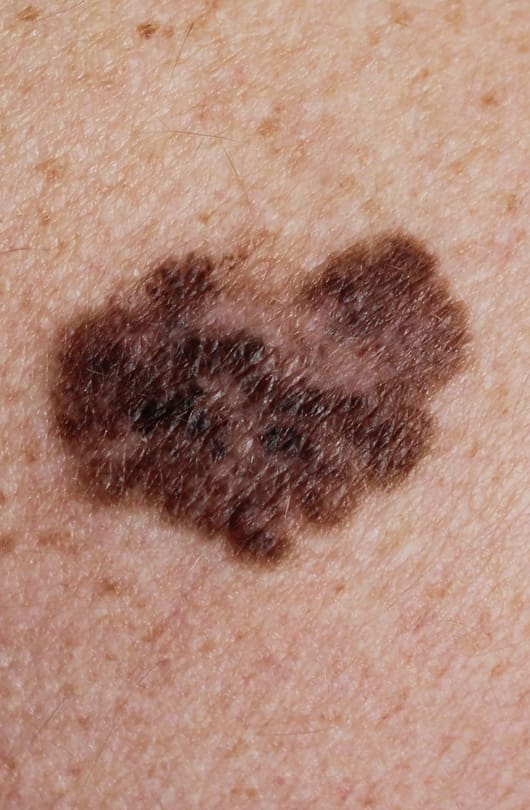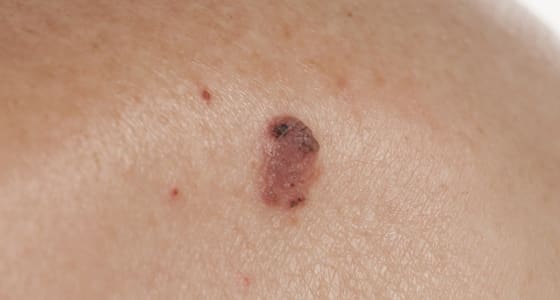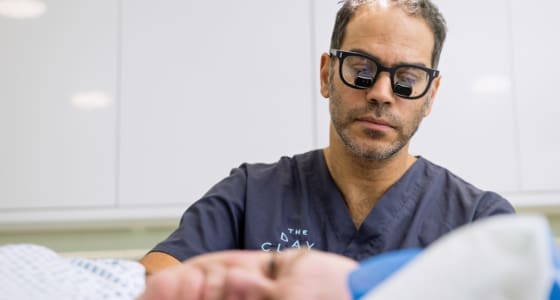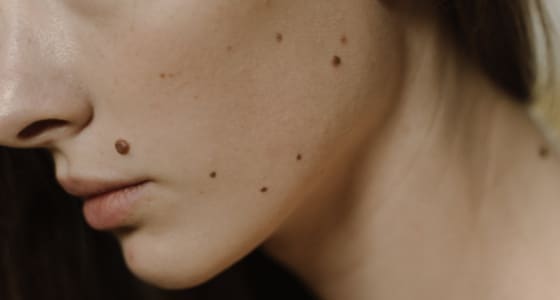This form of skin cancer can develop when melanocytes start to multiply excessively, and they have the potential to spread to other parts of the body (metastasise). Melanoma is considered a more dangerous type of skin cancer because of the risk of spreading if it not detected and treated early.
Often the first sign of a melanoma developing is a previous mole changing in colour or a new pigmented lesion developing. Most frequently there is darkening in colour but occasionally there is loss of pigmentation with pale areas developing. These irregularities in colour can give it a ‘variegated’ appearance. Melanoma can appear anywhere on the body but is commonly found on areas exposed to the sun or other sources of ultraviolet light (UV) such as the face, neck, arms and legs. The most common cause of melanoma is exposure to too much ultraviolet light from the sun. The use of artificial sources of ultraviolet light, such as sunbeds, also increases the risk.
Melanoma can also appear in areas not usually exposed to the sun including the palms of hands, soles of feet and under the nails.
The ABCDE rule is a helpful guide in identifying a suspicious mole or skin lesion. If you notice any of the following you should seek medical advice:
- Asymmetry
The shape of one-half of the skin lesion does not match the other. - Border
The edges are ragged, notched, uneven, or blurred. - Colour
Shades of black, brown, and tan may be present. Areas of white, grey, pink, red, or blue may also be seen. - Diameter
The diameter is usually larger than 6mm or has grown in size. This is about the size of a pencil eraser. Melanoma may be smaller when it is first detected. - Evolving
The mole or lesion has been changing in size, shape, colour, or appearance, or it is growing in an area of previously normal skin. When melanoma develops in an existing mole or lesion, its texture may change and become hard or lumpy. The mole or lesion may feel different and may itch, ooze, or bleed. A melanoma skin lesion usually does not cause pain.
Risks for melanoma include excessive sun exposure (especially with sunburns), a history of blistering sun burns in childhood, fair skin, a large number of moles or atypical moles, a history of melanoma in the family, a weakened immune system and certain genetic factors.
Early treatment of melanoma is very important. If it’s left to develop further, the out-of-control cells could grow deeper into layers of your skin and cause significant health issues. The layers of your skin contain tiny blood and lymphatic vessels, and if the melanoma cells get into either of these vessels, they can travel to other parts of your body. If your melanoma is thin or at its very early stages, it is unlikely to spread to your lymphatic or blood vessels and can be cured with surgery.
Melanoma is typically treated through surgical excision for skin cancer. If suitable, your procedure will be carried out under local anaesthetic in one of our purpose-built operating theatres at The Day Clinic.
In some cases additional treatments like radiotherapy, immunotherapy or targeted therapy may be recommended after surgery to reduce the risk of recurrence or to treat metastatic melanoma. These treatments will be overseen by a multi-disciplinary team, including your treating consultant at The Day Clinic, ensuring that you get the best and most appropriate care.











